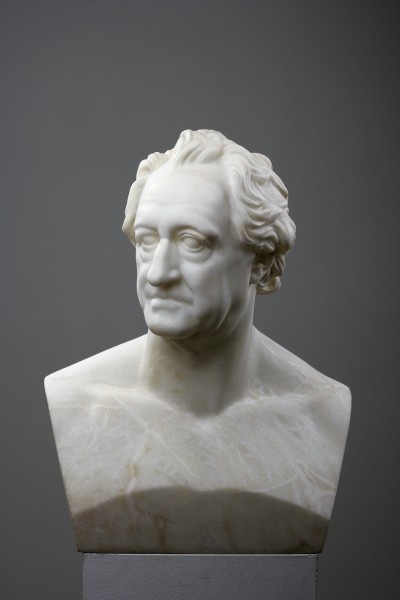Der Entwurf zu dieser Büste Goethes entstand anlässlich eines Wettstreites zwischen den Bildhauern Christian Friedrich Tieck (1776–1851) und Christian Daniel Rauch (1777–1857) im August 1820, als sich beide in Jena aufhielten. Sie wird deshalb auch a-tempo-Büste genannt. Die erste Ausformung fertigte Rauch 1821. Sie ist im Museum der bildenden Künste in Leipzig ausgestellt. In der Folge entstanden zahlreiche Werkstattrepliken, ähnlich der unseren (auf der hinteren Schulterpartie mit „Chr. Rauch“ signiert), welche aber häufig in Marmor ausgeführt wurden.
Der Goethe Rauchs beeinflusste auch seinen Schüler Ernst Rietschel (1804–1861) bei dessen Gestaltung des Goethe-Schiller-Denkmals in Weimar.
Erworben durch Überweisung 1997.
en

